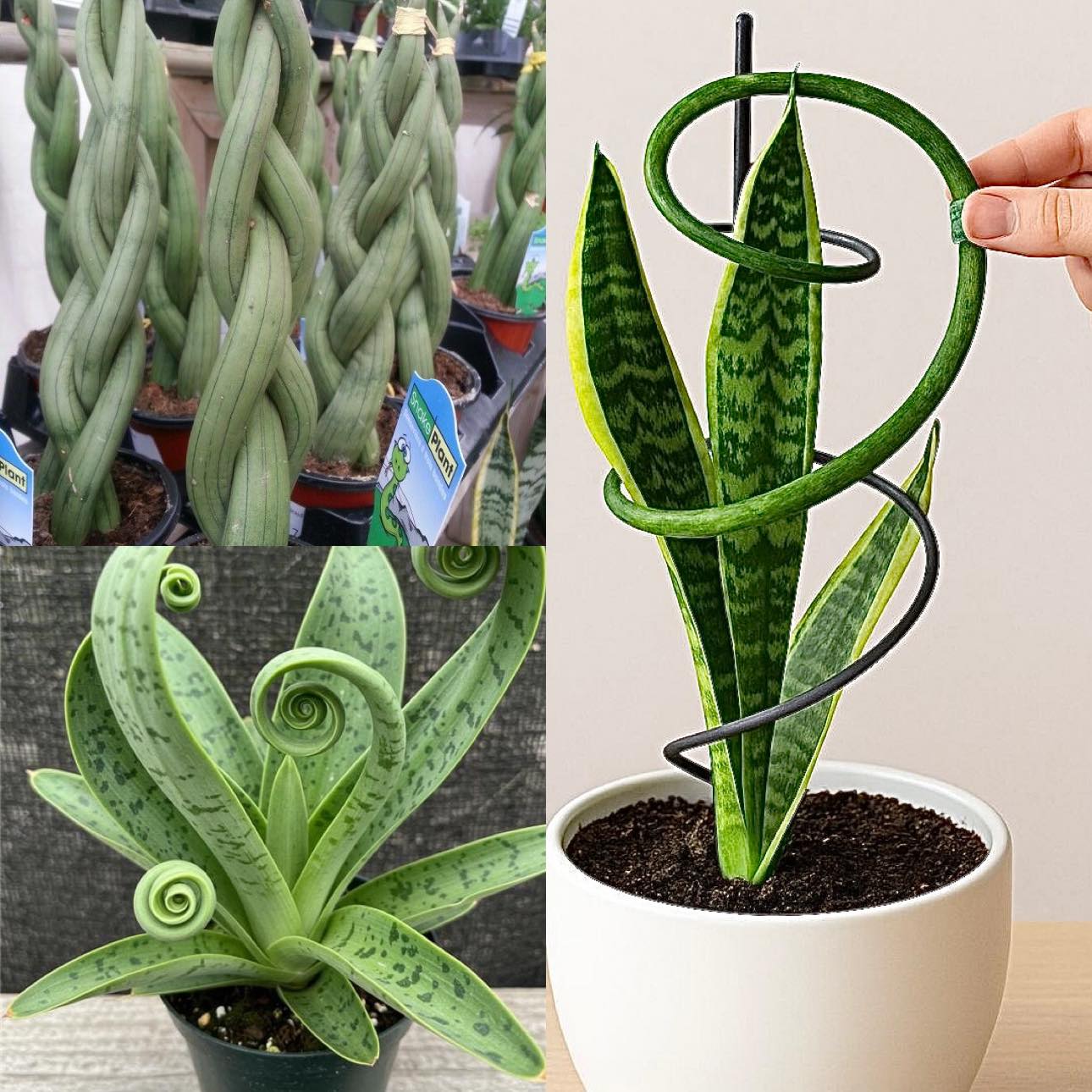Snake plants are already beautiful, but if you shape them into a spiral, it takes their beauty to the next level. Apply our techniques and tricks mentioned below, and you can train their tall leaves to twist gracefully.
And when you do this, don’t forget to be patient and let them grow so that they mature into spiral beauties.
How to Grow a Snake Plant In a Spiral Shape
1. Choose the Right Variety
When you choose the right starting plant, it makes the entire process smoother for both you and your Mother-in-law’s tongue.
Of course, not all snake plants are suitable for spiraling. Some, like Sansevieria cylindrica (African Spear Plant), have long, cylindrical leaves that are naturally easier to train into a spiral compared to the flatter-leafed varieties. Sansevieria ‘Twisted Sister’ is one more that is known for its curled leaves.
Sansevieria trifasciata ‘Hahnii’, with its compact rosette growth, is another excellent choice as its short leaves respond well to shaping. You can also try Sansevieria masoniana (Whale Fin) or Sansevieria Ballyi Cordova, which is a hybrid variety and features at the beginning of the article above.
Hybrid cylindrica cultivars (like ‘Skyline’ or braided varieties) are a good option, too. Getting a good one will allow you to guide and twist the plant without snapping or scarring it, and you will easily have the desired shape.
Pro Tip: Always buy younger plants as they adapt to shaping better than mature ones with stiff leaves.
2. Use A Support Frame
One of the most foolproof ways to train your snake plant is to use a spiral frame or trellis, as done with this Sansevieria francisii variety. This trick will give you a physical structure to wrap the leaves around, while guiding them into a neat coil.
You have to start by inserting a sturdy spiral-shaped rod or frame into the pot. Then gently tie the younger leaves to the structure using soft plant ties or jute twine. As your snake plant grows, keep adjusting and retying to maintain the shape. Over time, your plant will begin to harden in its spiral form.
Just avoid tying too tightly and leave enough room for the leaves to expand, or you risk scarring the surface.
3. Use the Gradual Twist Method
LOOK ATE THE NEXT PAGE
ADVERTISEMENT

